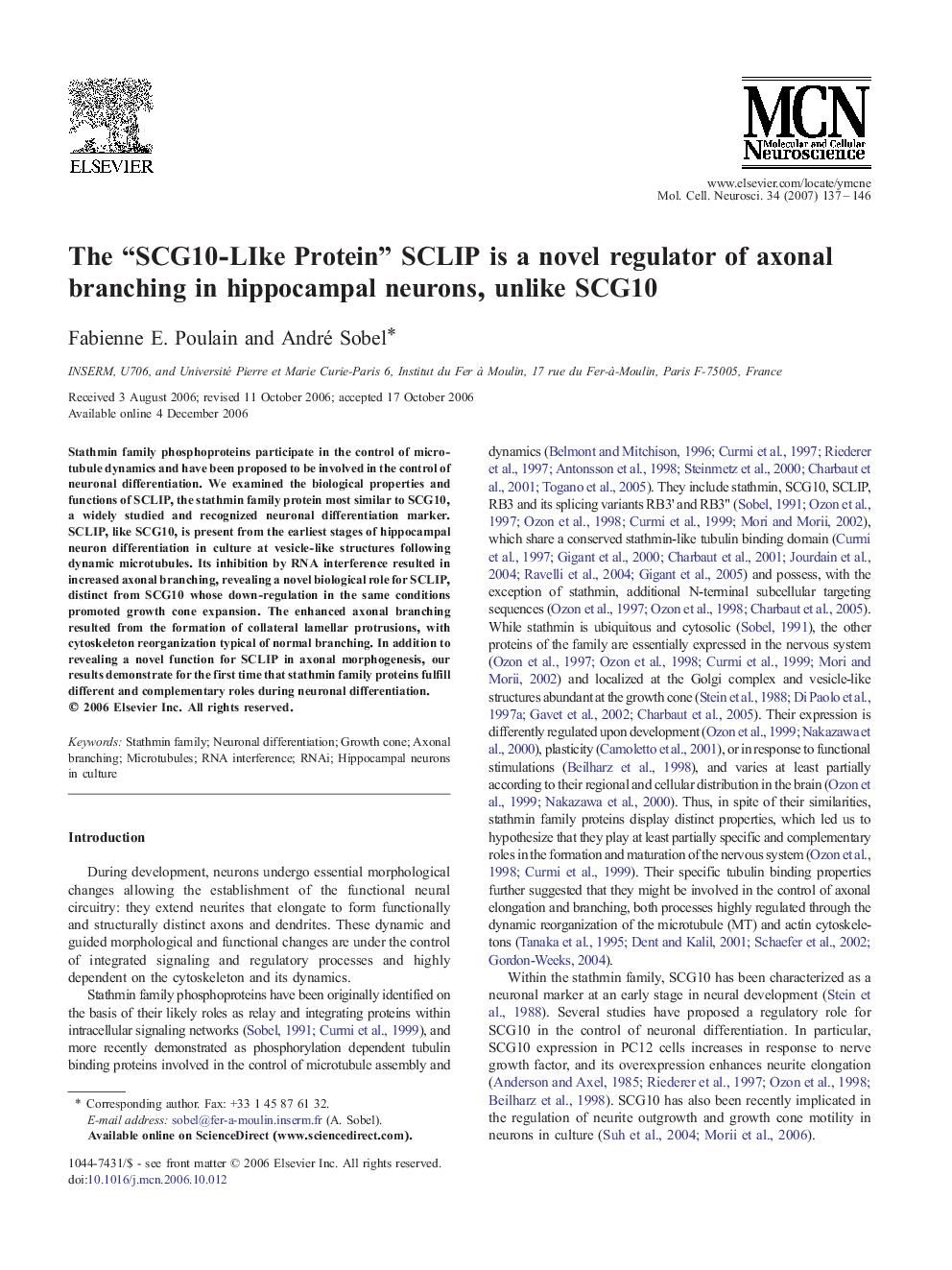| Article ID | Journal | Published Year | Pages | File Type |
|---|---|---|---|---|
| 2199303 | Molecular and Cellular Neuroscience | 2007 | 10 Pages |
Stathmin family phosphoproteins participate in the control of microtubule dynamics and have been proposed to be involved in the control of neuronal differentiation. We examined the biological properties and functions of SCLIP, the stathmin family protein most similar to SCG10, a widely studied and recognized neuronal differentiation marker. SCLIP, like SCG10, is present from the earliest stages of hippocampal neuron differentiation in culture at vesicle-like structures following dynamic microtubules. Its inhibition by RNA interference resulted in increased axonal branching, revealing a novel biological role for SCLIP, distinct from SCG10 whose down-regulation in the same conditions promoted growth cone expansion. The enhanced axonal branching resulted from the formation of collateral lamellar protrusions, with cytoskeleton reorganization typical of normal branching. In addition to revealing a novel function for SCLIP in axonal morphogenesis, our results demonstrate for the first time that stathmin family proteins fulfill different and complementary roles during neuronal differentiation.
